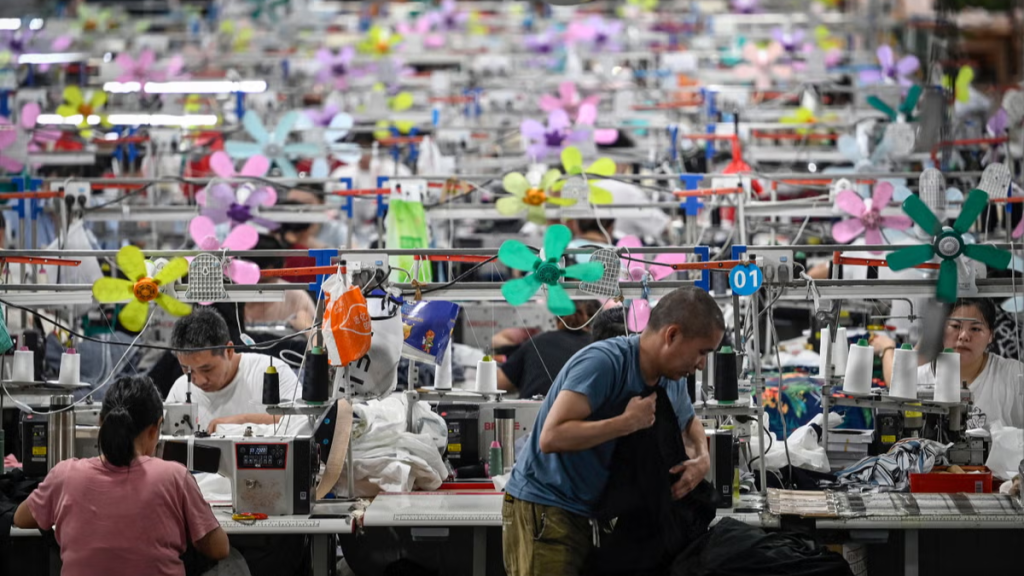In the heart of Guangzhou, China, small towns like Nancun and Panyu have become global engines of fast fashion. Known as “Shein villages,” these communities are filled with thousands of factories and workshops producing clothing sold through online giant Shein.
But now, their future is at risk. The Trump administration’s push for steep tariffs on Chinese imports threatens to upend the business model that allowed Shein to rise to global dominance.
At the center of the controversy is the United States’ planned elimination of a trade exemption known as the “de minimis” rule. This policy previously allowed packages valued under $800 to be shipped from China to American consumers duty-free.
Without it, companies like Shein will be forced to absorb or pass on increased import taxes, sharply impacting their pricing power and logistics.
Trump’s tariff proposals — including a possible 145% tax on Chinese imports — are part of a broader strategy to curb Beijing’s economic influence. But on the ground in these Chinese villages, the impact is being felt most by small factory owners and workers who rely on U.S. demand.
Shein’s Supply Chain Scrambles to Adapt
The looming trade barriers have forced Shein to take aggressive action. According to a report from Bloomberg, Shein is now encouraging its top Chinese suppliers to expand operations in Southeast Asia, particularly Vietnam.
In exchange, Shein promises guaranteed purchase volumes and higher unit prices — a sign of how vital these factories are to the company’s survival.
Vietnam has quickly become a popular alternative due to its free trade agreements with the U.S., low labor costs, and growing manufacturing infrastructure. While not a complete substitute for China’s highly specialized supply chain, it provides Shein with a way to reduce tariff exposure and maintain delivery timelines.
The shift, however, is not easy. Many Chinese factory owners lack the capital or connections to establish overseas operations. For smaller players, relocation isn’t feasible, and without U.S. orders, their operations could collapse entirely.
Local Factories Brace for Financial Fallout
In towns like Nancun, factory owners and workers are already preparing for the worst. The U.S. is Shein’s largest market, and some suppliers say up to 70% of their revenue is tied to American customers. With demand falling and contracts in limbo, some workshops are cutting back production, delaying payments, or laying off workers.
A recent report from The Straits Times interviewed multiple factory managers who said their profit margins are shrinking fast. “We are already seeing fewer orders this quarter,” one manager said. “If tariffs go through, we’ll have no choice but to close shop.”
For garment workers — many of whom migrated from rural provinces for more stable employment — this uncertainty has created fear and anxiety. Unlike large manufacturers, these smaller operations don’t have safety nets or alternative buyers.

U.S. Consumers Likely to See Price Increases
Shein’s fast fashion success has largely hinged on offering trendy styles at ultra-low prices, delivered within a week. The new tariffs would upend that formula. Starting in mid-2025, the company plans to raise prices for American shoppers to compensate for rising production and shipping costs.
In a report by The Cut, Shein executives confirmed that tariffs will lead to across-the-board price hikes. The move could make Shein less competitive against U.S.-based retailers and shift market dynamics in favor of brands with more domestic production.
Meanwhile, Shein and its rival Temu are already cutting back on digital advertising in the U.S. As noted in a Reuters article, both companies slashed ad spending by nearly 50% in early 2025 — a signal that they are bracing for slower growth.
A Pivotal Moment for Global Fashion and Trade Policy
The fast fashion sector is just one of many industries caught in the crosshairs of geopolitical tension. While Trump’s tariff campaign is designed to protect U.S. manufacturers, it highlights how interconnected the global economy has become.
For Shein, diversification may be the only path forward. The company is reportedly preparing for a future IPO and is keen to show investors that it can survive global policy shocks. Expanding to Vietnam, India, and other emerging markets may be part of that long-term strategy.
But for the factory owners in China’s Shein villages — many of whom built their businesses over the last five years during Shein’s explosive growth — the road ahead is filled with uncertainty. Unless new markets emerge or Shein maintains at least partial operations in China, these communities could become ghost towns.
The outcome of this trade standoff may not only reshape how clothing reaches consumers, but also redefine the global map of fashion production for years to come.
Disclaimer – Our team has carefully fact-checked this article to make sure it’s accurate and free from any misinformation. We’re dedicated to keeping our content honest and reliable for our readers.
